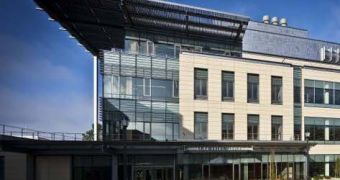Just recently, the University of California, Berkeley opened its brand-new Li Ka Shing biomedical center. Because of its green-oriented features, the building now managed to snatch a LEED Gold Certification.
For those unaware, LEED stands for Leadership in Energy and Environmental Design, which means that the scientists who are to carry on with their work at this research facility will be doing so in a highly environmentally-friendly manner.
As explained on UC Berkeley’s official website, the Li Ka Shing biomedical center incorporates a wide variety of green-oriented features, meaning that both proper resources management and effective use of materials during the construction phase were top priorities for the University's staff.
To be more precise, the building is fully equipped with sensors which carefully monitor energy and water usage, together with outside weather conditions, in order to make the most of these resources.
Thus, this biomedical center allows for natural ventilation and can tell you exactly when to open or close the windows so as to avoid temperature fluctuations which might strain the power grid.
Naturally, due consideration was also given to energy-smart cooling systems, which are expected to save the University quite a lot of money on electricity bills.
As well as this, the auditorium’s roof is home to various types of plant species known to attract native insects, and the green areas in front of the building consist of local plants which can thrive here without the need to use extra amounts of water to keep them standing.
Apparently, considerable efforts also went into providing contractors with re-usable and readily available building materials, meaning that the wood paneling comes from a demolished warehouse.
Teri Mathers, who was in charge of overseeing the construction operations, explains how, “During the design the decision was made to go for LEED certification. We just kept making the building greener and greener.”
Hopefully, future construction projects worldwide will follow in this biomedical center's footsteps.

 14 DAY TRIAL //
14 DAY TRIAL //